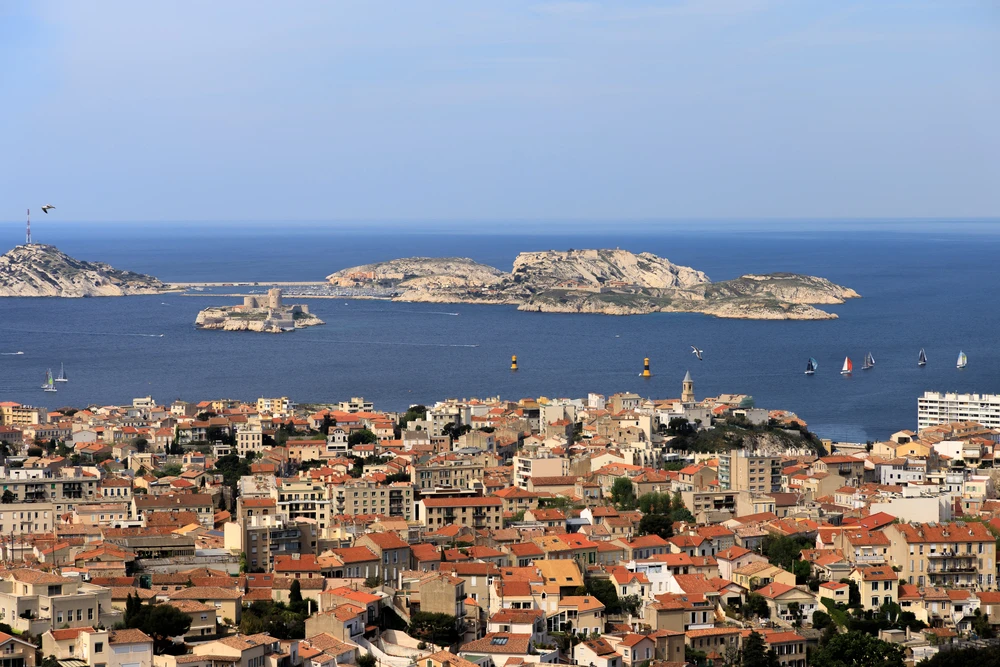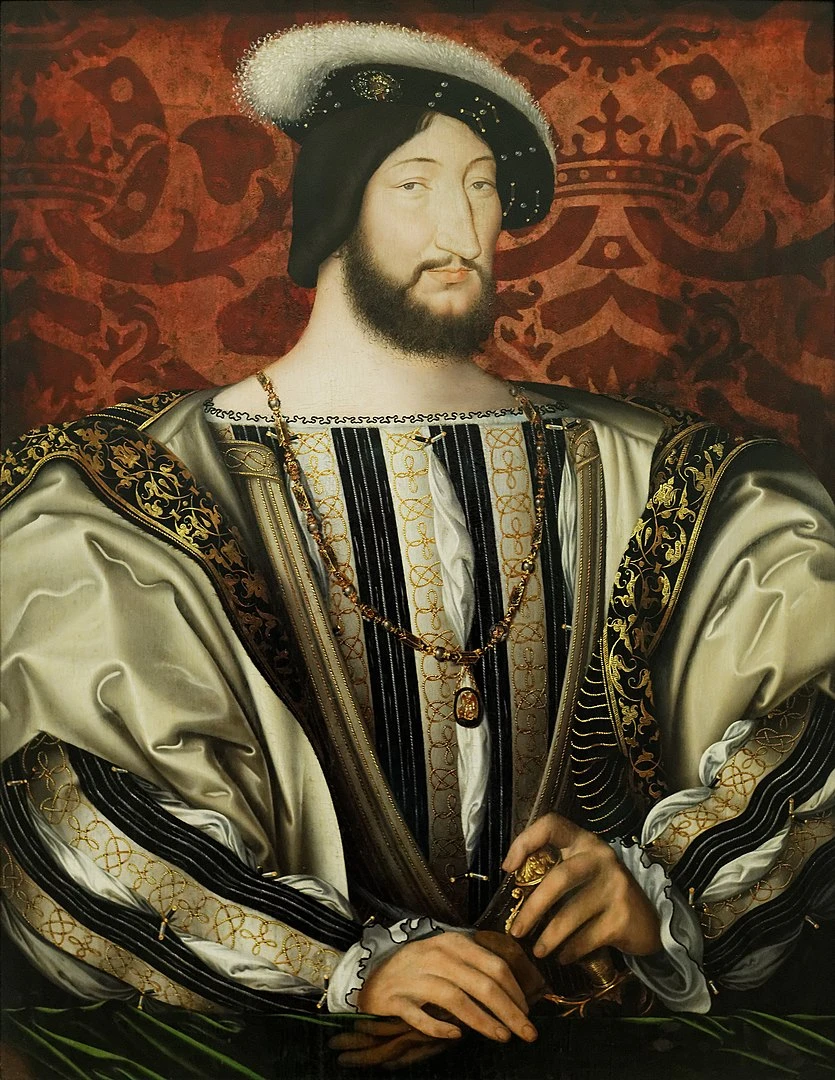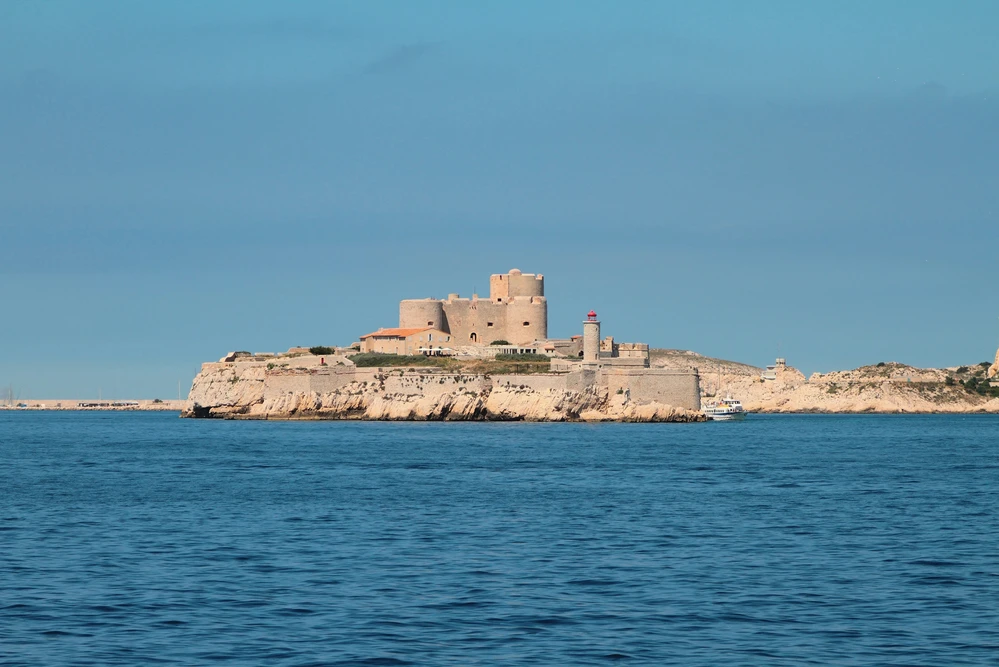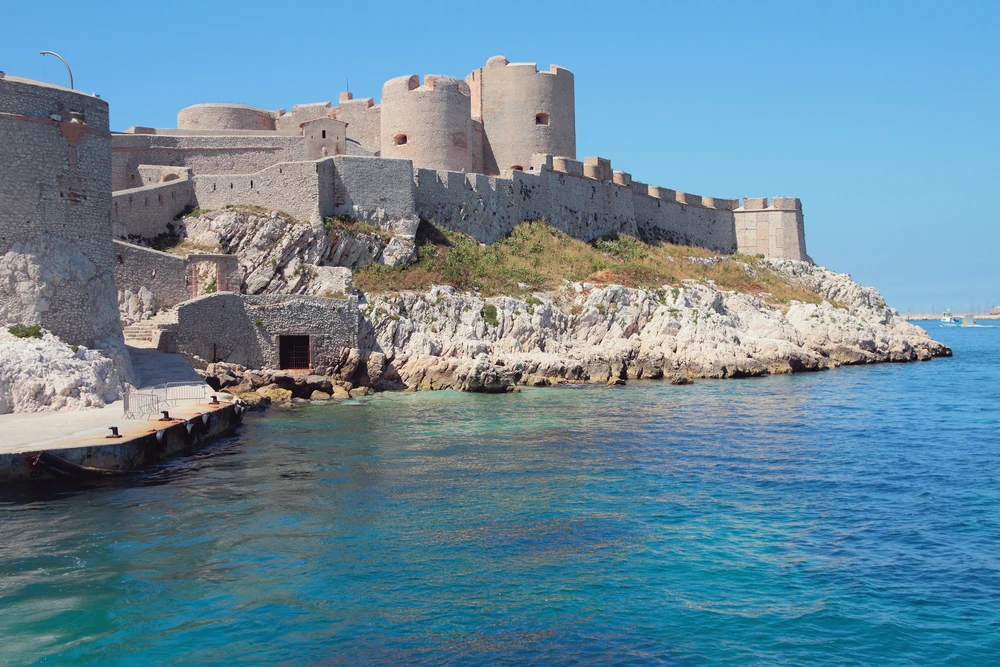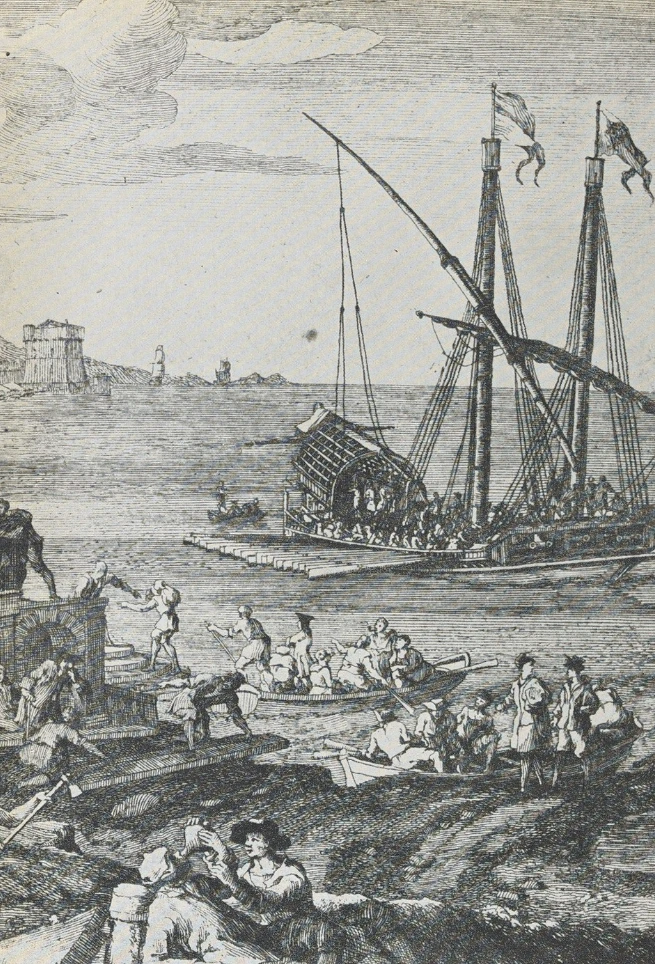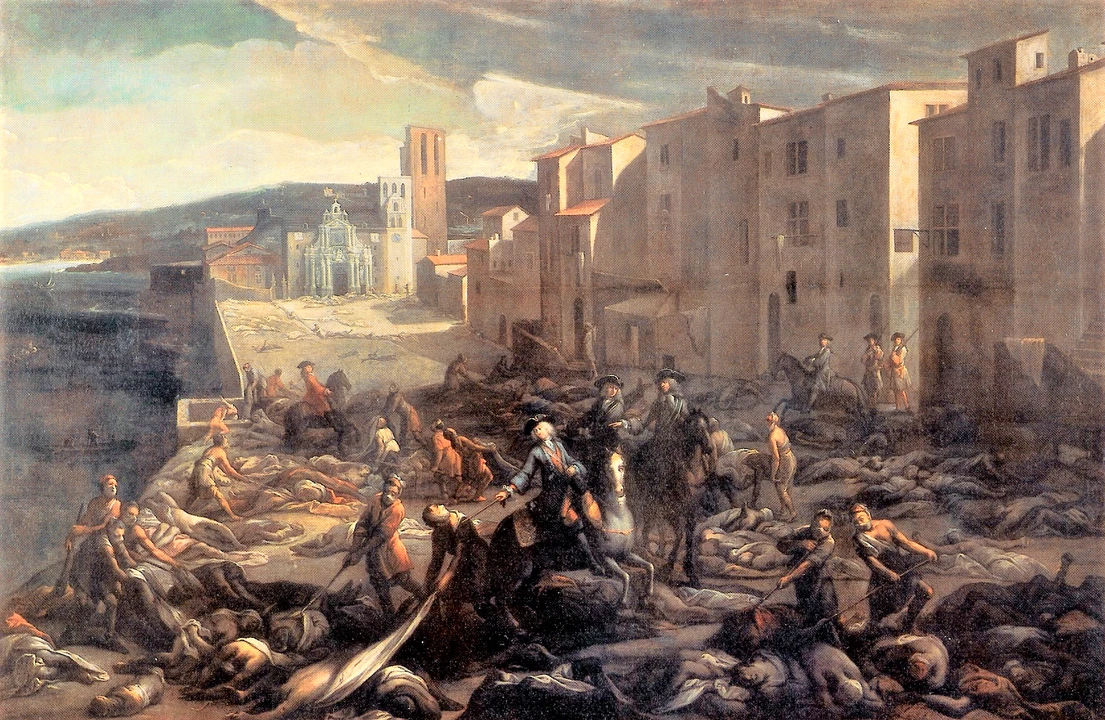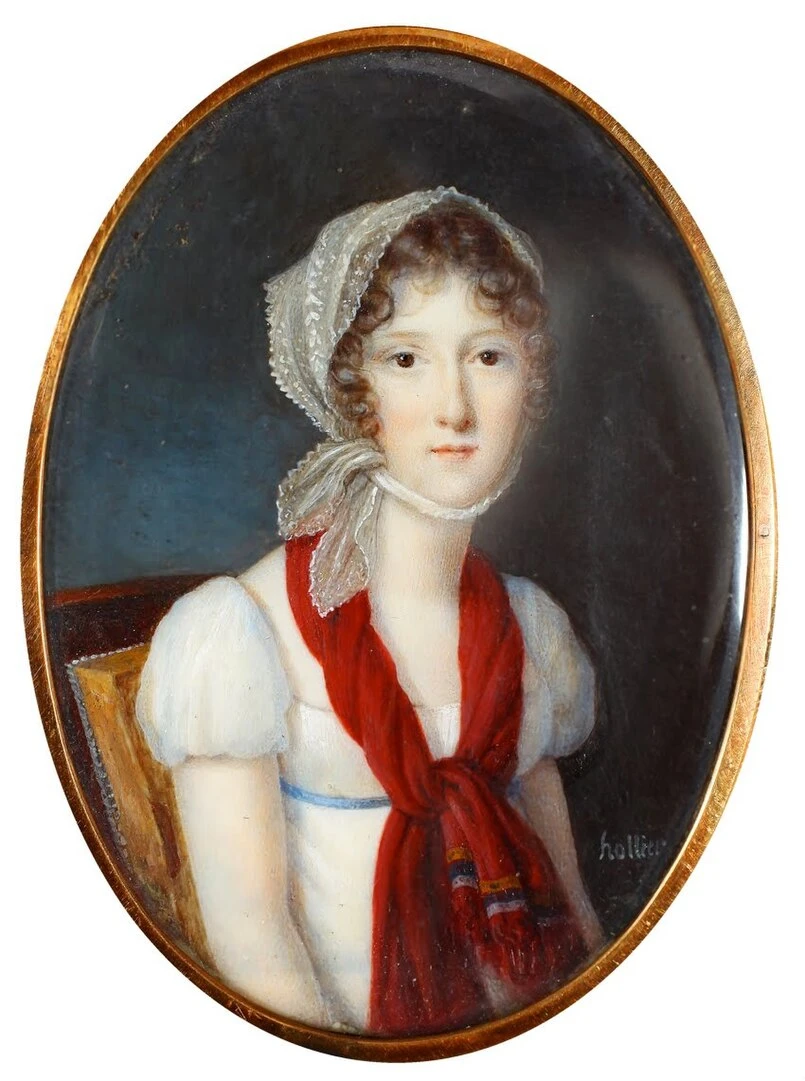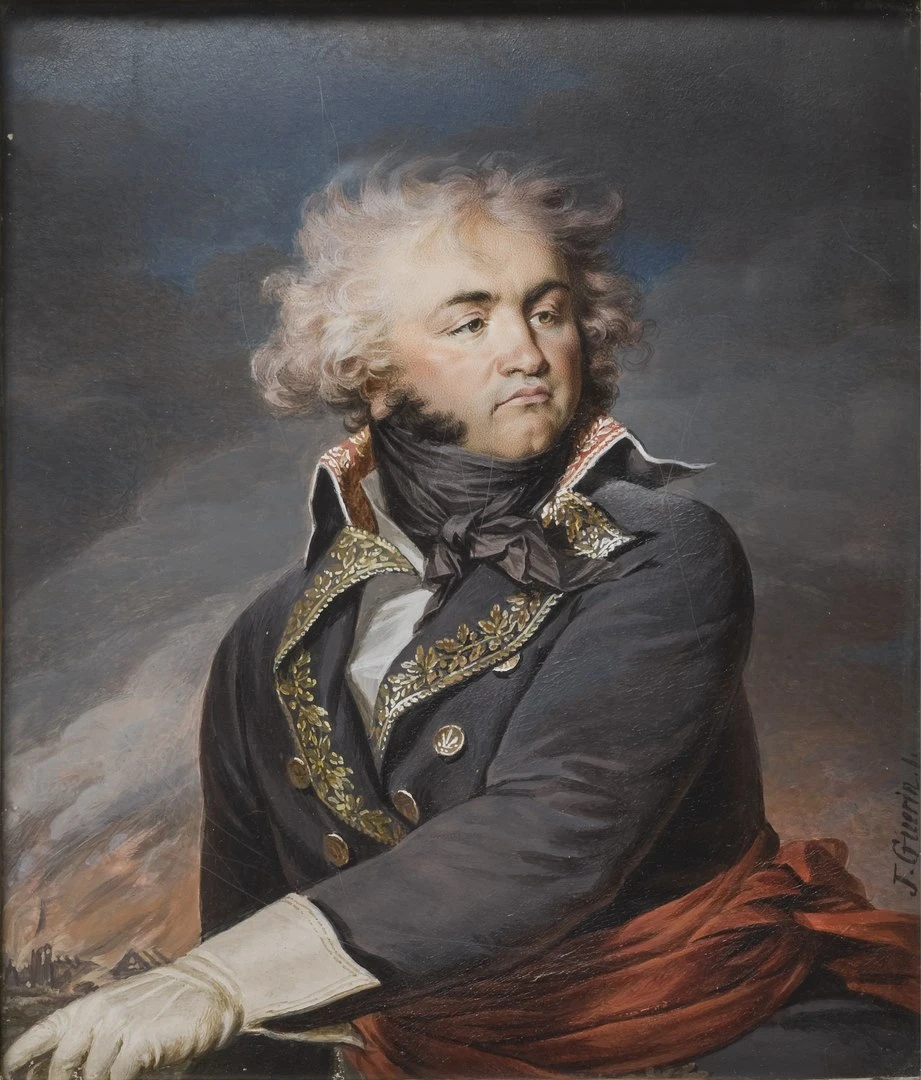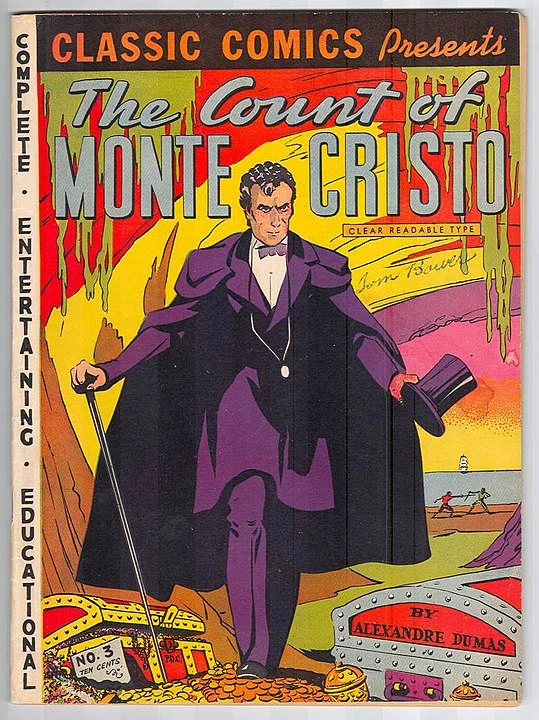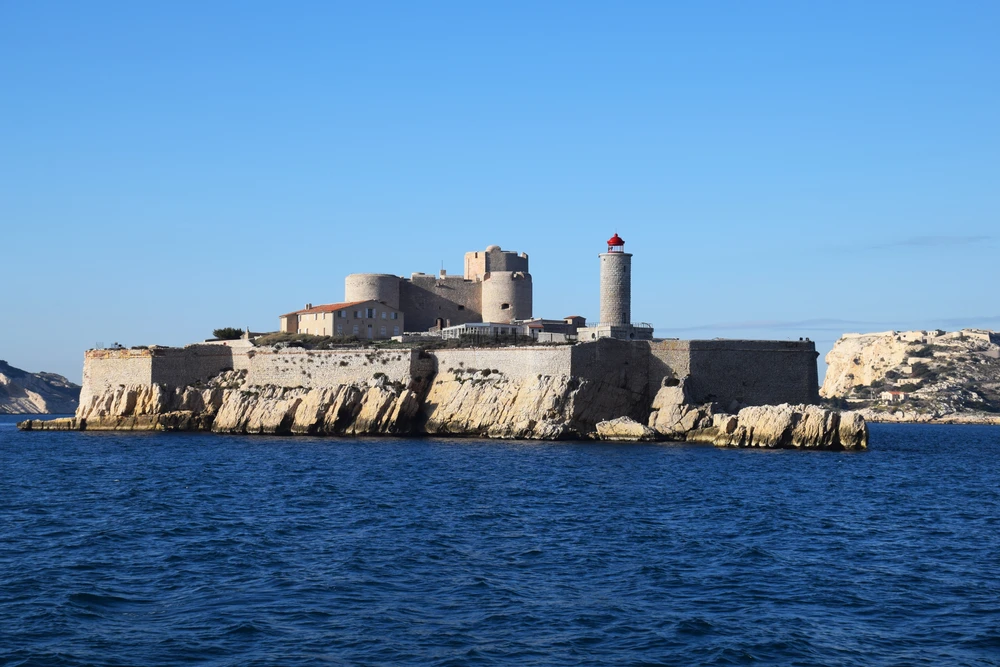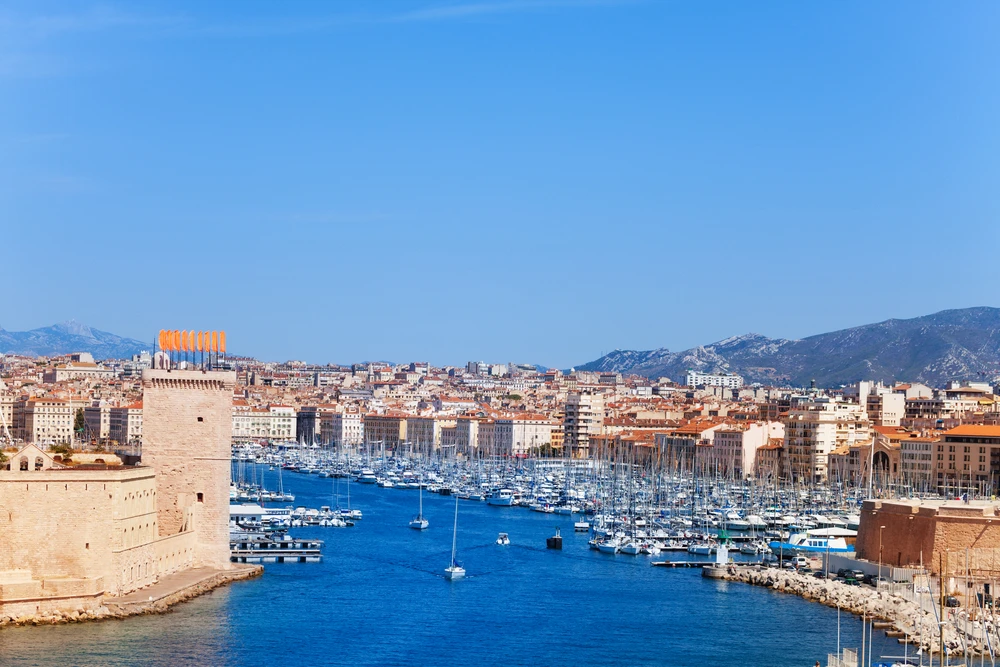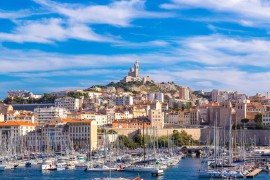Sorry if there are a few translation errors, but our translator wanted to visit the castle's secret dungeons and hasn't been seen for a few weeks... How odd!
What is a Chateau d'If castle?
If is an island in the Frioul archipelago off Marseille
It's part of one of France's smallest archipelagos: the Iles du Frioul. The Iles du Frioul comprise 4 islands and a few islets. There's Pomègue (2.7 kms long), Ratonneau (2.5 kms long), If and the Tiboulen du Frioul islet. The Frioul islands cover a total of 200 hectares and reach a height of 89 meters (on Pomègue). They are located in the harbor of Marseille , and are one of the city's districts. "If" is one of the farthest from the shore, at 4.4 kms. The castle covers the entire island.
From Notre Dame de la Garde, you can see the Frioul islands. In the center, the Château d'If. Photo chosen by monsieurdefrance.com: ChepeNicoli via depositphotos.
If a place long empty
For a long time, it was undeveloped, but it is known that the area was rich in game in the Middle Ages, and that people occasionally went there to hunt. It was here that Aragonese soldiers celebrated the capture and sacking of Marseille in 1423. It became French in 1481 when Provence was reunited with the French crown. And it was the French who changed the destiny of the island of If by building a fortress. It covers the whole island, so there's hardly any vegetation left, apart from a few pine trees. Don't look for Yew, the tree, there isn't any. The name "Yew" comes from the Latin "excerpere" meaning "withdrawn". It's true that it's far from the city of Marseille. It's also a place inhabited by very few animals these days, mainly lizards and gulls.
A map of the Frioul islands in 1665. Source selected by monsieurdefrance.com: Gallica.fr / BNF
A rhinoceros behind the construction of the Château d'If
It was in 1527 that King François 1er (1494-1547) decided to make the island of If a fortress. He came to the island somewhat by chance. During a pilgrimage to Saint-Maximin-la-Sainte-Beaume in Provence, he was told that an extraordinary animal was on the Ile d'If. It's a rhinoceros, the like of which no one has seen in the West since the 3rd century, and it's quite an event, especially as some say that a rhinoceros is probably the famous unicorn of which so many legends speak. This Indian rhinoceros was a gift from Portugal's King Manuel I (1469-1521) to Pope Leo X, and made a stopover in If, where Francis I came to admire it (it ended up stuffed in Rome after the shipwreck). The rhinoceros, not François 1er).
The rhinoceros that François 1er came to see on the Ile d'If. Engraving by Albrecht Dürer - Christie's, Domaine public, https://commons.wikimedia.org/w/index.php?curid=33609915
When François 1er discovered the rhinoceros, he also discovered Marseille and the Ile d'If, and his military eye was not mistaken: a fort here, 4 kms from Marseille, would be ideal to protect the entrance to the harbor of Marseille and therefore to France. So he decided to build it. It took 2 years, from 1527 to 1529. Other periods added to and modified the original construction, which began at the same time as work on Marseille's landmark: Notre Dame de la Garde. The construction of the Château d'If (and later of other forts on the Frioul islands) did not sit well with the people of Marseille at the time, who saw it as the king's stranglehold on a city they considered free. They called If "la malvoisine" , or the bad neighbor.
François 1er was behind the construction of the Château d'If / Portrait by Jean Clouet / Musée du Louvre Paris France. Public domain, https://commons.wikimedia.org/w/index.php?curid=30275305
What's the château d'if like?
This fort covers the whole of the Ile d'If, with a magnificent view over Marseille. It consists mainly of 3 large towers: the Tour Saint Jaume, the Tour Mongovert and the largest tower, the Tour Saint Christophe, which reaches a height of 22 meters. It is surrounded by ramparts (from all eras, each of which has added to the island's defenses, notably the famous Vauban, who built so many fortresses in France and whose work is a UNESCO World Heritage Site). There is also a lighthouse. Closed to the public until 1880, it has belonged to the French Ministry of Culture since 1994, and previously to the army. It can be reached from a pier in Marseille (see the end of this article for directions). The château was rarely besieged, but in 1536 it held out against Charles V, who attacked but failed to take the place. As we'll soon see, the château was for a long time a prison, so you can visit many of its dungeons. This allows us to imagine the terrible conditions of detention in what is the world's first Alcatraz .
Château d'If : a prison at sea
The castle is more than 4 km from the shore. Impossible to escape. Photo chosen by monsieurdefrance.com: photobeginner via depositphotos
In addition to being a fortress, the Château d'If became a prison 11 years after its construction, in 1540, when its first 2 prisoners were locked up there: fishermen from Marseille. Once on the island, it was impossible to leave, and there were no known escapes. So people were locked up there for 4 centuries, and conditions were not the same for everyone.
Château d'If: several types of dungeon
Thick walls prevent any exit. Photo chosen by monsieurdefrance.com: photobeginner via depositphotos
A courtyard as a place to get some fresh air and a drink when allowed, and dungeons. This is what the prisoners found. Prison conditions were so harsh that the life expectancy of the inmates was estimated at just 9 months, most of whom were locked up in ground-floor cells, often with several others. For the wealthiest, the "pistole" rooms (pistole is a coin) were located on the second floor. These were expensive and reserved for those who could pay for "comfort". They were equipped with windows. During your visit, you'll discover the dungeons and the graffiti left by the prisoners.
Who was locked up in the Château d'If?
3,500 Huguenots were locked up here for a few days or a few hours, before being chained to the king's galleys and rowed to their deaths. In 1848, 304 republicans were imprisoned here and sent to the penal colony. Alsatians and people from Lorraine were imprisoned there during the First World War (1914-198). They were "malgré nous", forced to fight under German uniforms, as Alsace and Moselle had been annexed by Germany. Many prisoners, but also the soldiers who guarded the place, left numerous graffiti on the walls and doors. It's a truly moving place to discover. The tradition of leaving a trace is perpetuated by a visitors' book that visitors can sign.
galerians / Illustration selected by monsieurdefrance.com: Bourdet Pléville, Michel 1957. Credit Gallica.fr / BNF
The Château d'If and its famous prisoners
Among the long list of people locked up at the Château d'If is the Chevalier de Lorraine (1643-1702), lover of "Monsieur", Philippe d'Orléans, brother of Louis XIV. Driven from the Court of Versailles by the death of his lover, the Chevalier de Lorraine was imprisoned for some time at the Château d'If before moving to Rome, where he died a few months later. Mirabeau (1749-1791), the famous revolutionary, was imprisoned there in 1774 on the orders of... From his father. It must be said that the boy was quite a libertine, and his escapades had the Mirabeau family in a bad light. True to his reputation, Mirabeau took advantage of his stay at the château to seduce the garrison canteen maid. Incorrigible! The Château d'If was also the place where Jean Baptiste Chataud, captain of the ship "le grand Saint Antoine" , was locked up. He had long been suspected of having brought the plague to Marseille in 1720, because he had not respected the quarantine rule, i.e. waiting forty days before disembarking. This saved his life, as the contagion, which claimed hundreds of thousands of lives in the south of France, did not strike the Château d'If at all. The revolutionary Auguste Blanqui was imprisoned there, as was Gaston Crémieux, a lawyer and journalist who was locked up for his involvement in the Paris Commune, and shot a few months later.
Paradoxically, being locked up in the Château d'If probably saved the prisoners and soldiers from contagion during the last great plague epidemic in France in 1720 / Illustration chosen by Monsieur de France: Scene of the plague in 1720 at La Tourette (Marseille district) By Michel Serre - Transferred from en.wikipedia to Commons, Public domain, https://commons.wikimedia.org/w/index.php?curid=11604224
A single female prisoner at If
Fanny Dillon (1785-1836) one of the few women, if not the only woman, to have been locked up in the Château d'If / Illustration chosen by monsieurdefrance.com: Hôtel Bertrand, Public Domain, https://commons.wikimedia.org/w/index.php?curid=147587443
Only one famous woman was ever imprisoned at the Château d'If. She was Fanny Dillon (1785-1836), arrested in 1815 with her husband General Bertrand for her loyalty to the emperor Napoleon. She then followed the emperor to St. Helena, and was one of those who witnessed the emperor's last moments in the bedroom of Longwood House in 1821.
A dead man stays 18 years in the Château d'If prison
General Kléber's body remained in the Château d'If for 18 years / Illustration chosen by monsieurdefrance.com: By Jean-Urbain Guérin - Erik Cornelius / Nationalmuseum, Domaine public, https://commons.wikimedia.org/w/index.php?curid=52118814
In 1800, the body of Alsatian general Jean-Baptiste Kléber (1753-1800), assassinated on June 10, was laid to rest a few weeks later at the Château d'If. Deeply republican, General Kléber was not appreciated by Napoleon, who feared that his tomb would become a place of republican pilgrimage, nor by the kings who returned to the throne in 1815. So he remained in the Château d'If for 18 years, locked in a lead coffin. He was not released until 1818, when he was repatriated to Alsace and buried in Strasbourg cathedral, before being moved in 1838 and installed under the square that bears his name. Even death is full of surprises, you must admit!
Did the Count of Monte Cristo ever exist?
No, he's a character born of the imagination of Alexandre Dumas in 1844. In "The Count of Monte Cristo", Alexandre Dumas recounts the unjust imprisonment and escape of Edmond Dantès, who discovers a treasure and returns for revenge. The novel was an immediate success, and has been translated into numerous films and TV series, and starred both Depardieu and, more recently, Pierre Niney. Edmond Dantes' escape by swimming, recounted in the novel, is the origin of the "Monte Cristo challenge", a 5 km freestyle swimming race from the Château d'If to Marseille, which attracts a huge number of sportsmen and women.
Le comte de Monte-Cristo raconté en BD / Illustration selected by monsieurdefrance.com: By Ray Ramsey - Classic Comics #3, 1942, Domaine public, https://commons.wikimedia.org/w/index.php?curid=4307415
How do I get to the Château d'If?
As it is an island, access is by boat. ATTENTION: weather conditions (wind, rain...) may prevent departure.
Le château d'If / Photo chosen by monsieurdefrance.com: Depositphotos.
Château d'If opening times
10H00 18H00 from April 1st to September 30th
10H00 17H00 from October 1st to March 31st
Closed : Mondays, January 1, May 1 and December 25.
Château d'If visit price
There are several prices (adult, child, student etc...) but to give you an idea in 2024 the full individual price is 7 euros. All the info is here (they take the blue card) and you can even book online (it's better if it's busy).
Marseille's old port, where you'll find the pier for the château d'if / Photo selected by monsieurdefrance.com: serrnovik via depositphotos.
Address of the ambarcadere for the Château d'If and the Isles of Frioul.
1 quai de la fraternité. It's located on the Vieux-Port, at the far right when you look out over the sea. As it's in the heart of Marseille, it can be reached by a wide range of public transport services, including Line 1 of the metro.
Parking address
There are parking lots all around the old port, but the nearest to the pier is 16 rue Pytheas / 13 001 MARSEILLE.

